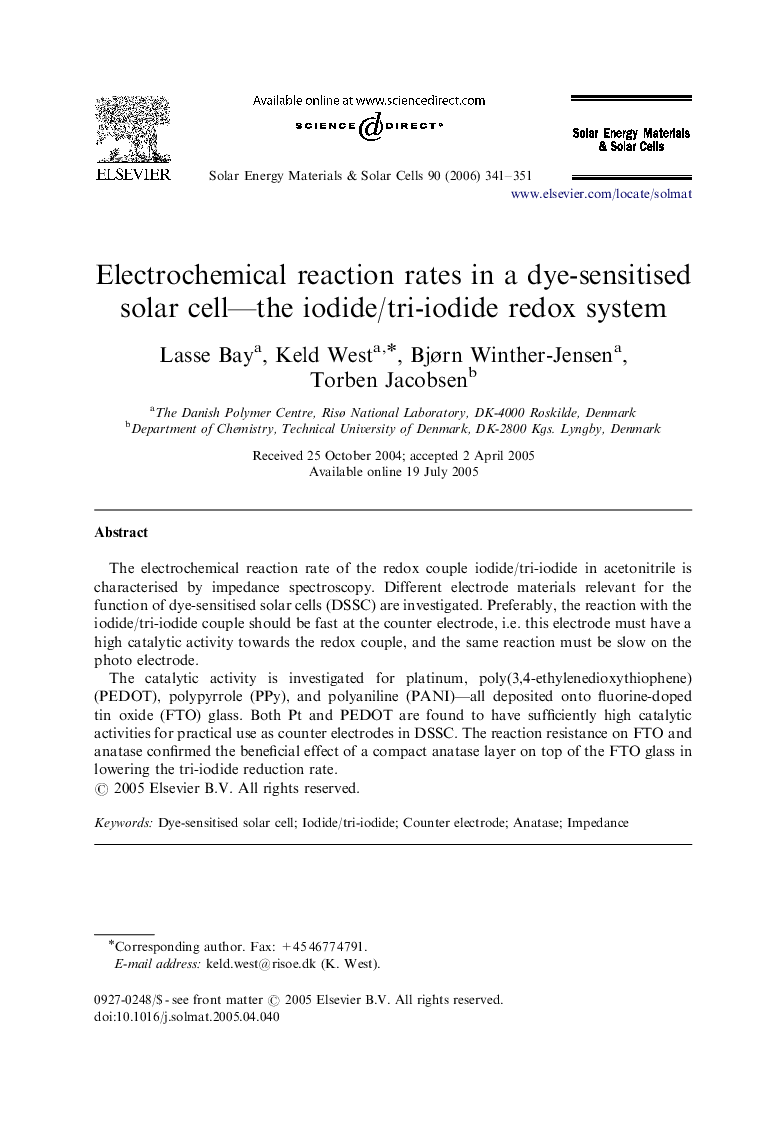| Article ID | Journal | Published Year | Pages | File Type |
|---|---|---|---|---|
| 81321 | Solar Energy Materials and Solar Cells | 2006 | 11 Pages |
The electrochemical reaction rate of the redox couple iodide/tri-iodide in acetonitrile is characterised by impedance spectroscopy. Different electrode materials relevant for the function of dye-sensitised solar cells (DSSC) are investigated. Preferably, the reaction with the iodide/tri-iodide couple should be fast at the counter electrode, i.e. this electrode must have a high catalytic activity towards the redox couple, and the same reaction must be slow on the photo electrode.The catalytic activity is investigated for platinum, poly(3,4-ethylenedioxythiophene) (PEDOT), polypyrrole (PPy), and polyaniline (PANI)—all deposited onto fluorine-doped tin oxide (FTO) glass. Both Pt and PEDOT are found to have sufficiently high catalytic activities for practical use as counter electrodes in DSSC. The reaction resistance on FTO and anatase confirmed the beneficial effect of a compact anatase layer on top of the FTO glass in lowering the tri-iodide reduction rate.
